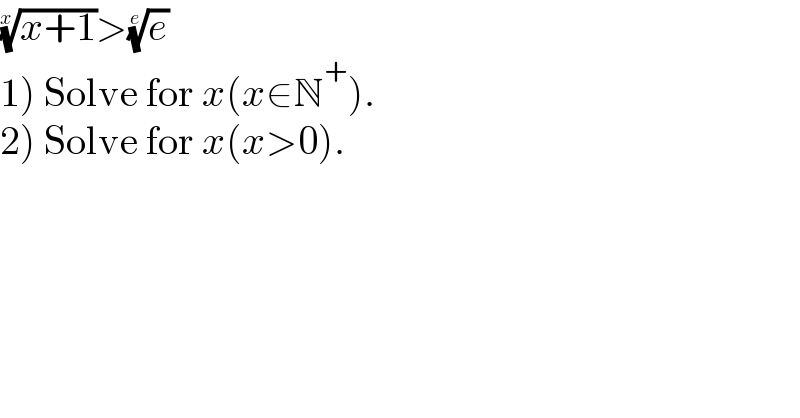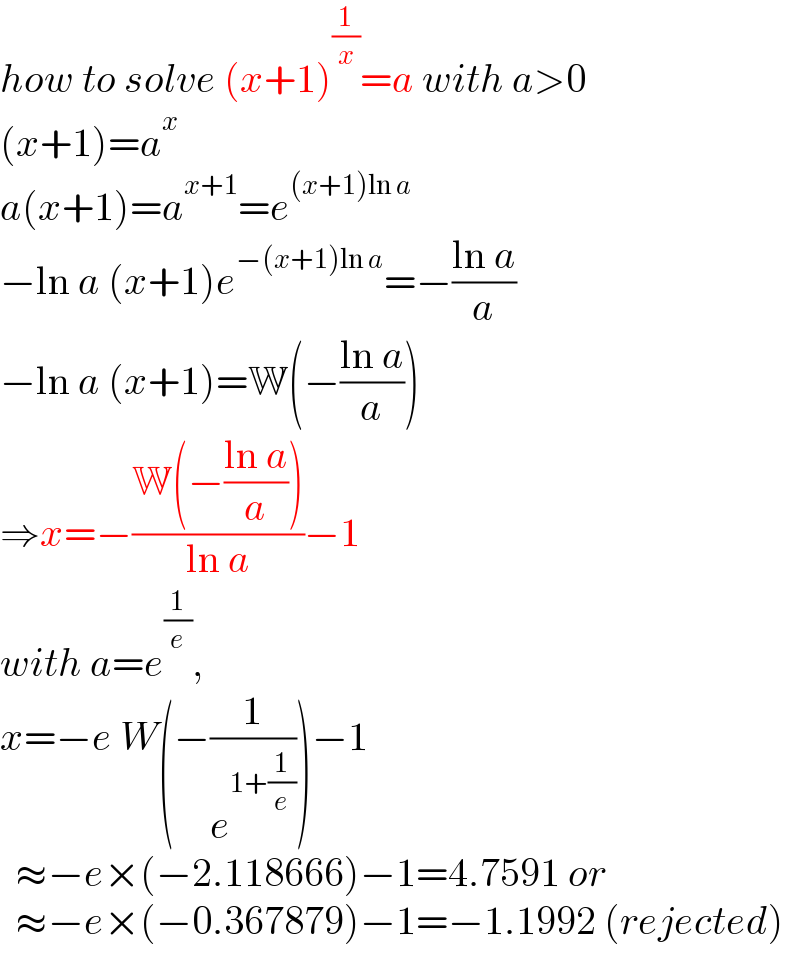
Question and Answers Forum
Question Number 182575 by CrispyXYZ last updated on 11/Dec/22

Answered by mr W last updated on 12/Dec/22
![f(x)=(1+x)^(1/x) for x>0: f(x) is strictly decreasing. f(x)=(1+x)^(1/x) =e^(1/e) ⇒x_1 ≈4.7591 (solution see later) (1+x)^(1/x) >e^(1/e) ⇒0<x<x_1 ≈4.7591 1) x∈[1,4] 2) x∈(0,4.7591)](Q182630.png)
Commented bymr W last updated on 12/Dec/22

| ||
Question and Answers Forum | ||
Question Number 182575 by CrispyXYZ last updated on 11/Dec/22 | ||
 | ||
Answered by mr W last updated on 12/Dec/22 | ||
![f(x)=(1+x)^(1/x) for x>0: f(x) is strictly decreasing. f(x)=(1+x)^(1/x) =e^(1/e) ⇒x_1 ≈4.7591 (solution see later) (1+x)^(1/x) >e^(1/e) ⇒0<x<x_1 ≈4.7591 1) x∈[1,4] 2) x∈(0,4.7591)](Q182630.png) | ||
| ||
Commented bymr W last updated on 12/Dec/22 | ||
 | ||